Rock climbing has a diversity problem. This L.A. group is on it.
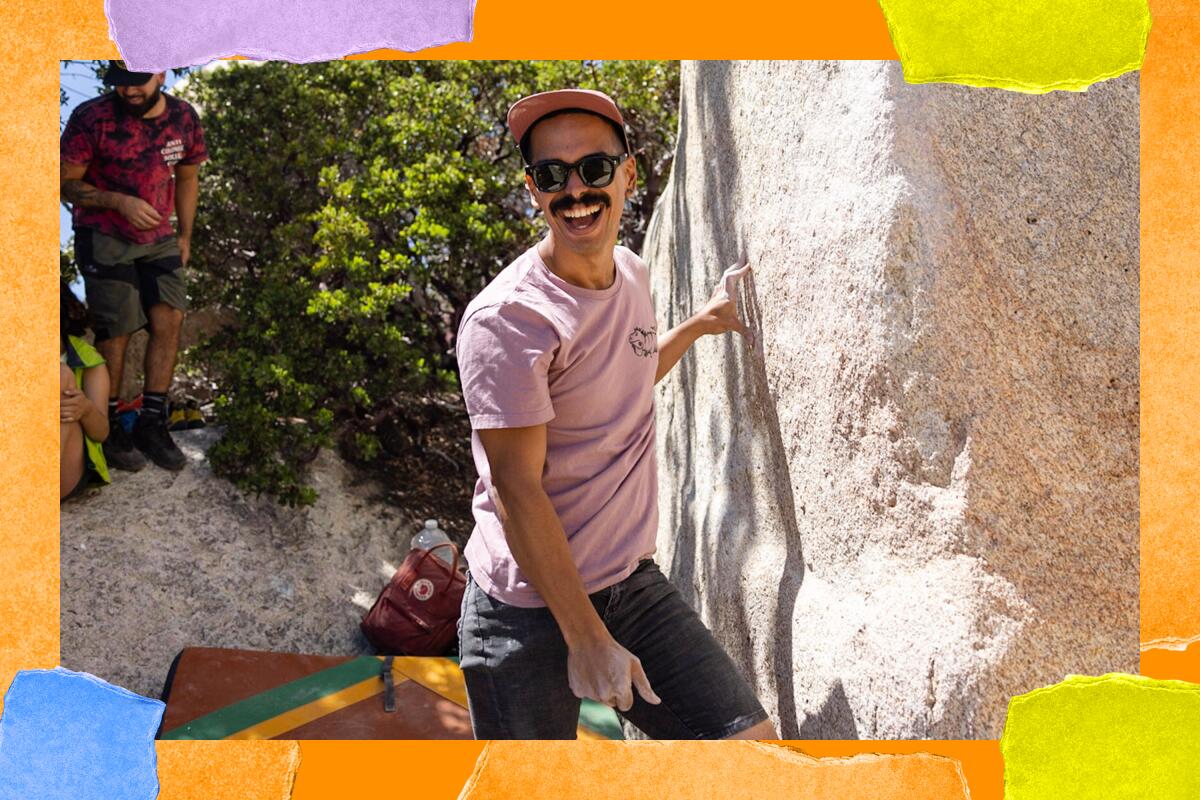
- Share via
Editor’s note: The Wild is featuring exciting voices from SoCal’s outdoors scene. We loved having Casey Schreiner sharing his wisdom over the last three months. Starting this week, we’re welcoming Dakota Kim as our new guide. Dakota is an avid traveler and veteran journalist who approaches the outdoors as a rock climber, hiker, forager and gardener — and as the mom of a 3-year-old. (She’s been hiking with her son strapped to her since his second month of life.) Dakota loves walking as much as possible in Los Angeles, foraging and looking for birds along the way and road-tripping to Joshua Tree and Idyllwild. For the next few months, she’ll be sharing fresh ideas for hiking and getting outdoors.
Happy New Year, folks. I’m excited to be kicking off 2023 with you, a year in which I hope we’ll find ourselves outdoors flexing in nature more than we find ourselves inside flexing our typing muscles. If you’re looking for a reinvigorating hobby, there’s a sport that’s on fire: climbing. Folks are finally figuring out this “slacker sport” is a triple threat: arm-rippingly brutal, intensely cerebral and yes, nonchalantly cool.
My favorite thing about it is how it soothes my anxious mind. Come 7 a.m., there’s nowhere I’d rather be than hanging from a bouldering wall like a sloth, solving a problem (that’s climbing lingo for topping out and finishing a route) — or trying to, and failing. When I’m on the wall, it’s just me. There’s nothing else I can think about, or I’ll fall.
Most of the time, I hit the gym for my climbing boost. I’d love to climb outdoors more (which isn’t without its chalky environmental concerns), but the barriers can be steep: time, money, know-how. Plus, you need friends around — not all boulderers use a spotter, but it’s nice to have, and pals are crucial for coaching you on your beta (basically, any tips on how to master that climb). Another barrier to entry for climbers is inclusion. This exhilarating but not-so-diverse sport can feel especially intimidating to climbers of color. Only 1.5% of USA Climbing members and affiliates identified as African American and 4.7% as multiracial, according to Clemson University research.
In my opinion, when you’re the only climber of color, you feel the weight of representing your race — and that feeling doubles when you’re queer, you’re not cis-male or when you’re disabled (yes, disabled climbers excel in this sport). The feeling of isolation can make you less likely to participate, and I’m saying that as an Asian American woman who often climbs with other women of Asian descent in her gym. You also face criticism from your own community, as multracial climber Indigo Johnson shares in their excellent piece about diversity in climbing.
Thirty-three-year-old boulderer Anuardi Cantre-Santiago, who grew up in Puerto Rico, started climbing with a friend six years ago at Stronghold in downtown L.A., then outdoors with a friend in Bayamón, Puerto Rico, where he found himself “totally hooked.” A few years later, he got a membership at L.A.’s Touchstone gyms, where I’m also a member. But without his previous climbing friends, he found himself one of only a few climbers of color at any given gym. So, in August 2021, he started Lagartijas Climbing Crú, a resource, supply and knowledge network for “people of the global majority” — and also, just a group of folks who like to climb together in both SoCal and NorCal.
I chatted with Cantre-Santiago about how his group helps climbers of color ascend to greater heights. Answers have been edited for length.
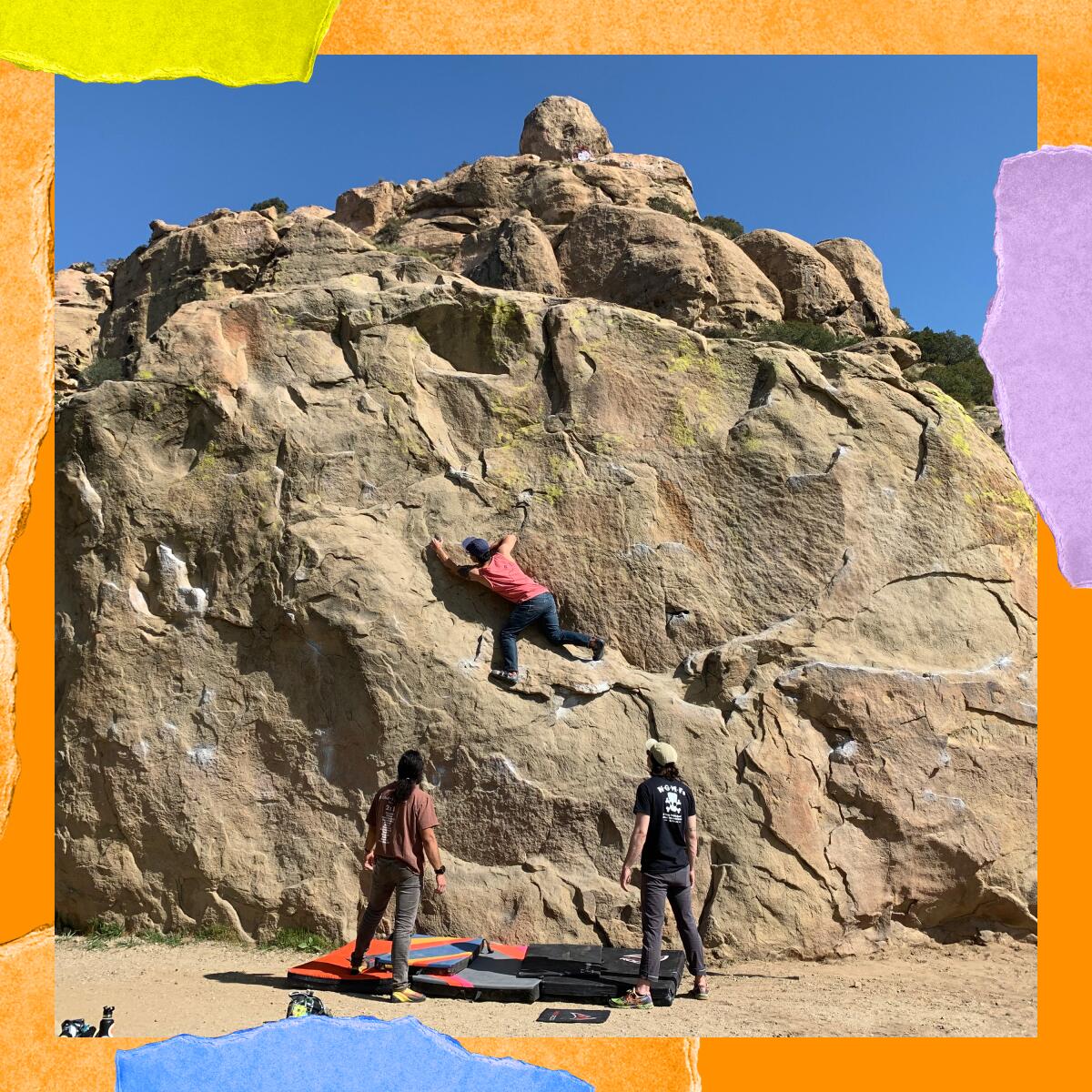
There’s an ongoing conversation about how the outdoors belongs to us all, but climbing, like skiing, has a reputation as an elite luxury sport. Why is that?
Climbing is a very expensive sport — the cost can be pretty prohibitive. An indoor day pass is $20 to $30, and shoes are maybe $80 if you find a deal, so it’s $100 to go just once. Going to a space where you don’t see people like you can be kind of jarring. You’re the only brown person, the only Asian person. I wanted to create that space where, ideally, a person who looks like you or is from the same community can teach you what they know.
What does your name mean?
Lagartijas means “lizards” in Spanish. In the beginning, it was just called “BIPOC Climbing Crew,” but after people came to the first couple meetups, it felt pretty important to have a name. When you have a name, you have something to belong to. Lizards are everywhere, they climb all around, and they come in different colors and sizes, so we settled on that. We are people from everywhere in the world, and what connects us is that we like to climb, and we like to build community.
What do members get from the group?
We’re trying to help people expand their climbing knowledge. Gyms don’t show you how to fall, how to read a route. We help each other out with technique.
We’ve got a little gear library, with 10 crash pads at different climbing gyms. We coordinated with gyms to leave the crash pads there in storage closets, so people from the local community could borrow them for free and start going outside. Now, we have a tent and guidebooks people can borrow, and we also try to do free clinics — like a clinic with Ashima [Shiraishi, a highly-accomplished 21-year-old American rock climber] about visualization; intro to rope climbing so people can learn to belay; or clinics about warming up or working out to train for climbing.
We also do a day bouldering outside, and people who haven’t gone outside yet get to figure out the area, learn to read a route, learn to climb outside. We’ve done Stoney Point, Malibu, Point Dume, different places.
It seems tougher for climbers of color to transition from indoor to outdoor climbing. Have you experienced that?
When I first went outside, I had been climbing for three or four years, v4s and v5s [intermediate-level difficulty bouldering routes], so I thought, I can do this. I saved money, got a crash pad and went to Horse Flats. It took me so long to find a boulder. I thought, I need to go with someone who knows how to do this. I didn’t climb again for a year outside, even though I had a crash pad, until a friend took me to Stoney Point. I think even camping could be intimidating for people of color, like asking, “How did you do it, and where did you camp?” There’s all this experience that a lot of people didn’t grow up with.
What is it like for Crú members, climbing outdoors for the first time?
When someone is entry-level, you have people from all levels cheering them on and helping them feel comfortable. You can ask for beta, or what a downclimb is [how to climb down after finishing a bouldering route]. At first, I didn’t even think about how to get down, which is the worst part. And some people just get hooked. In prime climbing season, we get a lot of requests to borrow crash pads.
Seeing the community encourage each other and go climbing together on the weekend outside of meetups — that gives me joy, that we’re making a difference for at least a few people.
My family hasn’t been supportive of my climbing, even indoors. I’ve hidden from them that I climbed outside (sorry, Mom). Does a disapproving family make it harder for some climbers of color?
Yeah, I would send my mom a photo of me bouldering outside, and she would say, “You’re crazy — why are you doing this?” Not many Puerto Ricans grew up doing it, but now there’s a bouldering gym there that’s 5 years old.
Any plans to fundraise and offer gym scholarships?
We would like to be able to cover memberships, but we also want to see gyms take more ownership over the inequity in climbing and act on it. At Memphis Rox, a community center and climbing gym in Memphis, Tenn., they have a scale system: Depending on how much money you make, you pay a different price to access this gym. A lot of these gyms open up, and you have white people coming in who can afford it, or people of color like me who are privileged and can afford it. It’s not just about Lagartijas covering it, but also seeing the gym cover it. Gyms can be diverse and be a part of the physical community that they’re in.
Where can climbers join you, and can we donate to the group?
We’re at all the gyms in this area, like Touchstone, Long Beach Rising and Sender One. A donation is encouraged when borrowing gear — sometimes when people borrow a crash pad, they donate $2 to $5 — but do not feel pressured. Mostly, it’s just us reaching out to brands like the outdoor retailer Arc’teryx, which did an event for us with an auction and a class. Anybody can donate, but we don’t take any used stuff like harnesses or ropes.
If you’re interested in attending an event, follow Lagartijas on Instagram (January events thus far are mostly indoors due to the rain). A day pass or gym membership is required for indoor meets; outdoor meetups are free except for transportation. Looking to get outside? We’ve got tips on where to go.
4 things to do
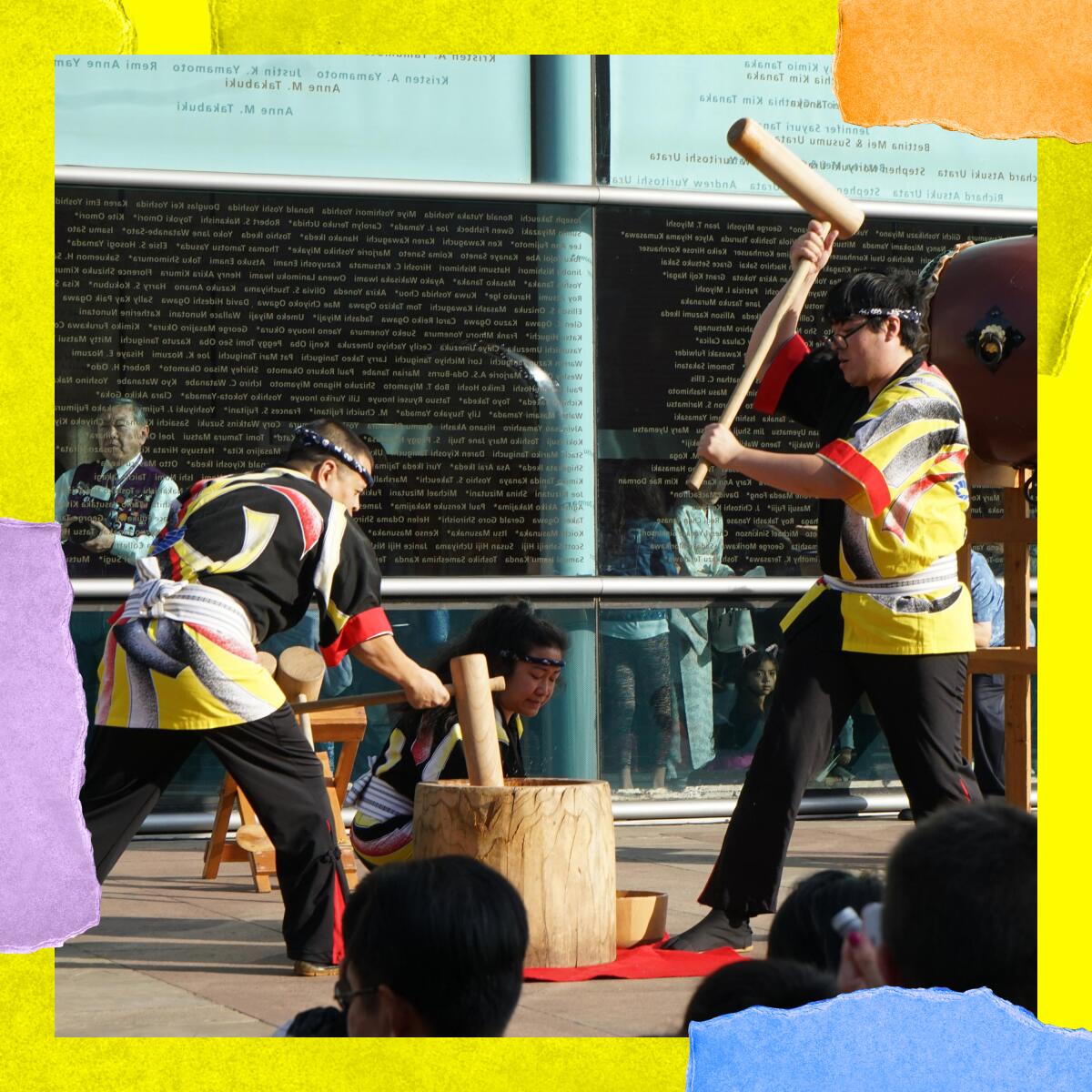
1. Party for Japanese New Year in Little Tokyo. Think you work up a sweat making mochi, the Japanese rice cake, at home? Then the Oshogatsu, or Japanese New Year, mochitsuki ceremony at the Japanese American National Museum will blow you away. The performance fuses taiko percussion by the Japanese drumming group Kodama Taiko with the dynamic pounding of sweet rice, employing large wooden mallets called kine. On Sunday from 11 a.m. to 5 p.m., ring in the new year with a free family-friendly fest featuring a scavenger hunt, candy sculpture demos by Shan the Candyman, koto music, calligraphy performances, Year of the Rabbit origami and more. (No need to RSVP, but if you do and show your ticket at the membership table, you’ll be entered in a gift bag raffle.)
Get The Wild newsletter.
The essential weekly guide to enjoying the outdoors in Southern California. Insider tips on the best of our beaches, trails, parks, deserts, forests and mountains.
You may occasionally receive promotional content from the Los Angeles Times.
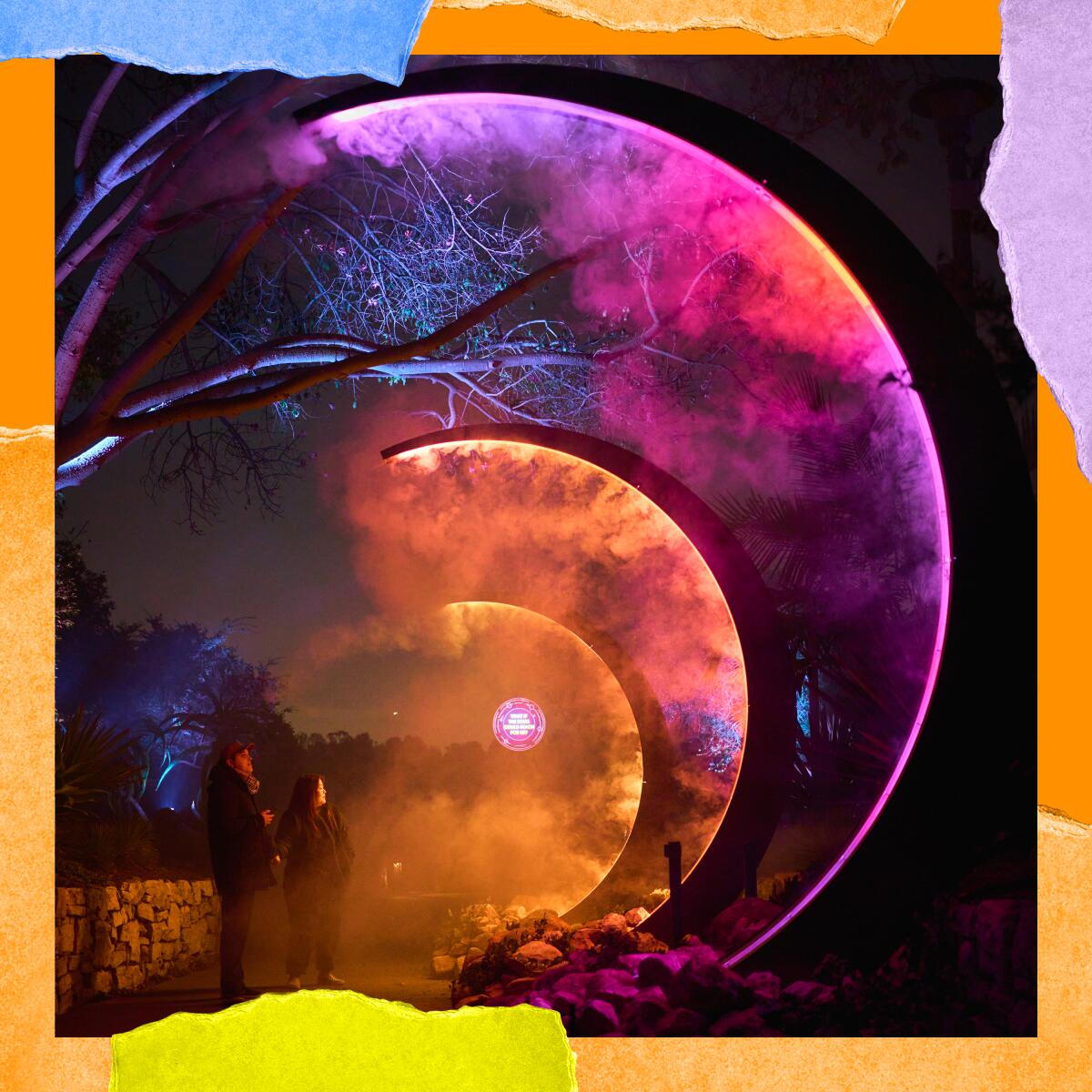
2. Get cosmically inspired by star-themed night lights. We’ve run through the gauntlet of the major winter holidays (whew!), but a few light shows go on. One of the most impressive, Astra Lumina, is at the South Coast Botanic Garden in Palos Verdes. The event honors our ancient fixation with the celestial bodies by bringing the stars to us in a combo of otherworldly music and lights. There’s still time to catch it through January, including this Sunday. Tickets range from $24 to $34. Parking is $8 for the shuttle lot and $20 for the preferred parking lot; head there early if you’re in the shuttle lot.
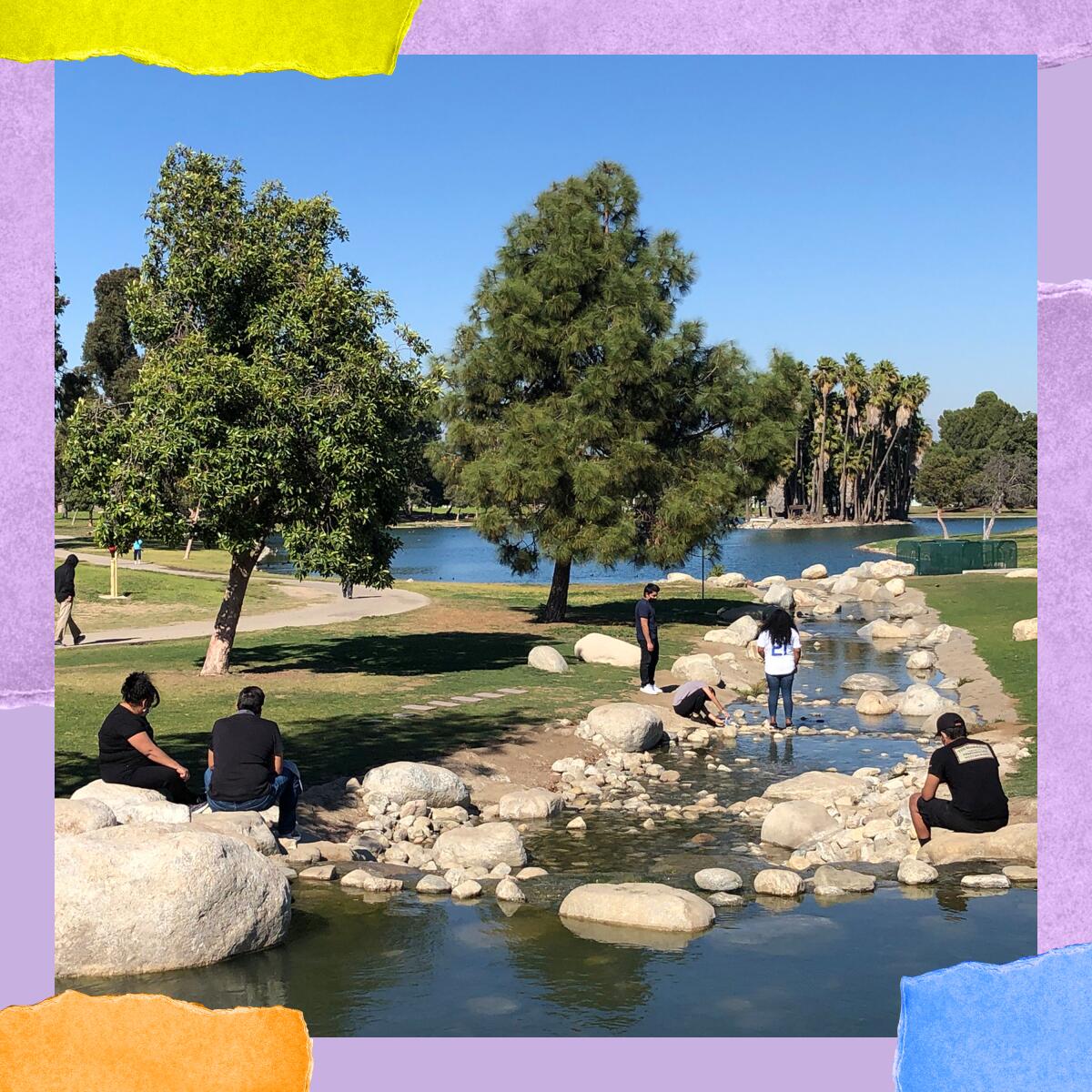
3. Introduce your littles to Indigenous weaving. In Mesoamerican cultures, the tree of life can symbolize the four cardinal directions and the link between the underworld, the heavens and the Earth. A similar tree symbol is found throughout many communities, including American Indigenous ones. In this no-cost LACMA workshop Saturday from 10:30 a.m. to 12 p.m. at Earvin “Magic” Johnson Park, kids learn about Indigenous weaving traditions by creating woven trees of life using yarn and pipe cleaner. They’ll go home with paper plate decos and new memories of the traditional art.
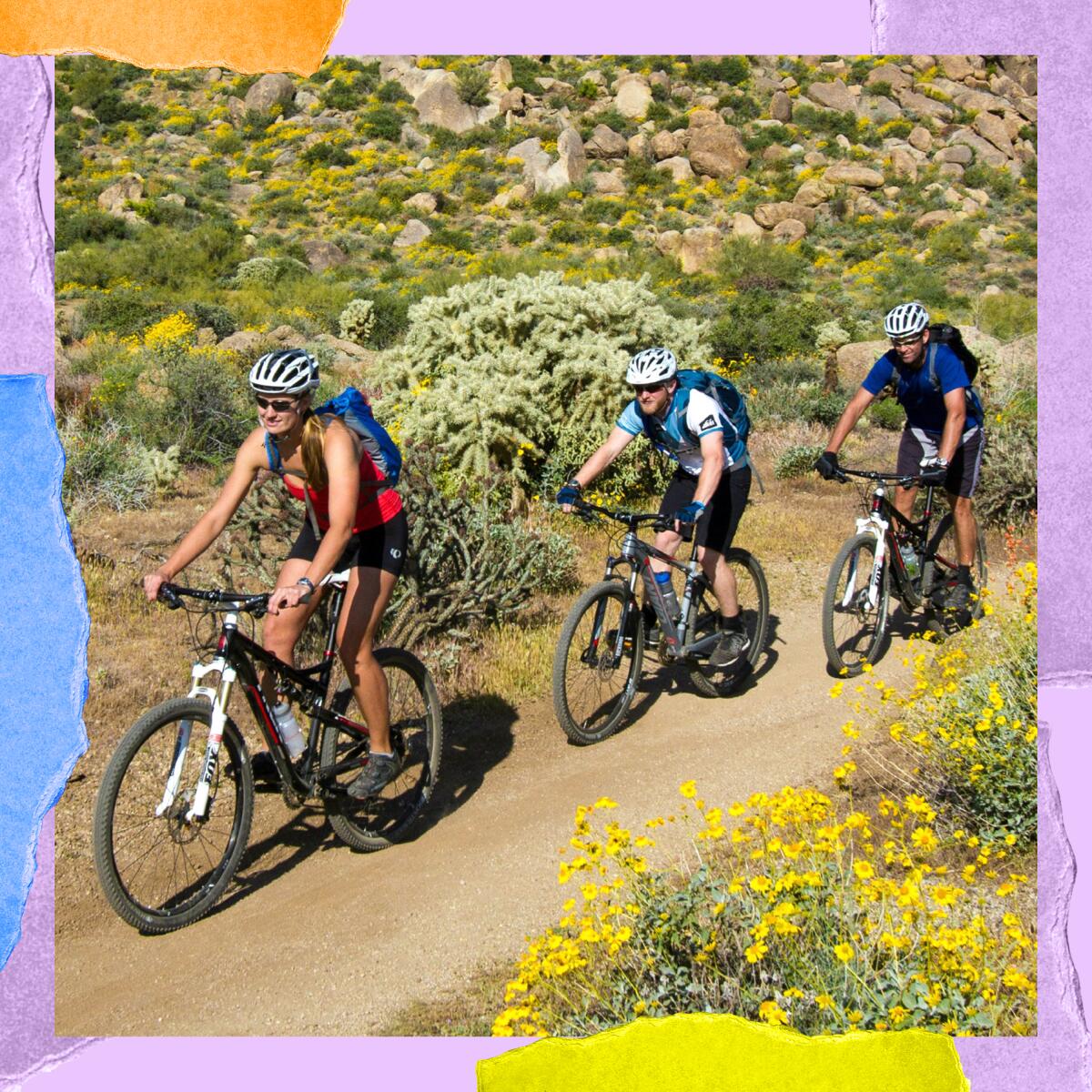
4. Shred some trails in Malibu. If you’re sick of spinning four wheels on the 101, swap them in for two this Saturday at REI’s mountain-bike intro class at relatively flat Malibu Creek State Park. You don’t need a bike, helmet, bike tools or first aid, since the outdoor outfitter provides it all for $129. You’ll learn fundamentals like body and pedal position, plus how to shift, brake, climb, descend and deal with small obstacles. OK, so maybe you won’t shred just yet, but this top-rated class for ages 14 and up will get you on your way. If you can’t make this sesh, lucky you — REI offers this class regularly.
Check out “The Times” podcast for essential news and more.
These days, waking up to current events can be, well, daunting. If you’re seeking a more balanced news diet, “The Times” podcast is for you. Gustavo Arellano, along with a diverse set of reporters from the award-winning L.A. Times newsroom, delivers the most interesting stories from the Los Angeles Times every Monday, Wednesday and Friday. Listen and subscribe wherever you get your podcasts.
The must read
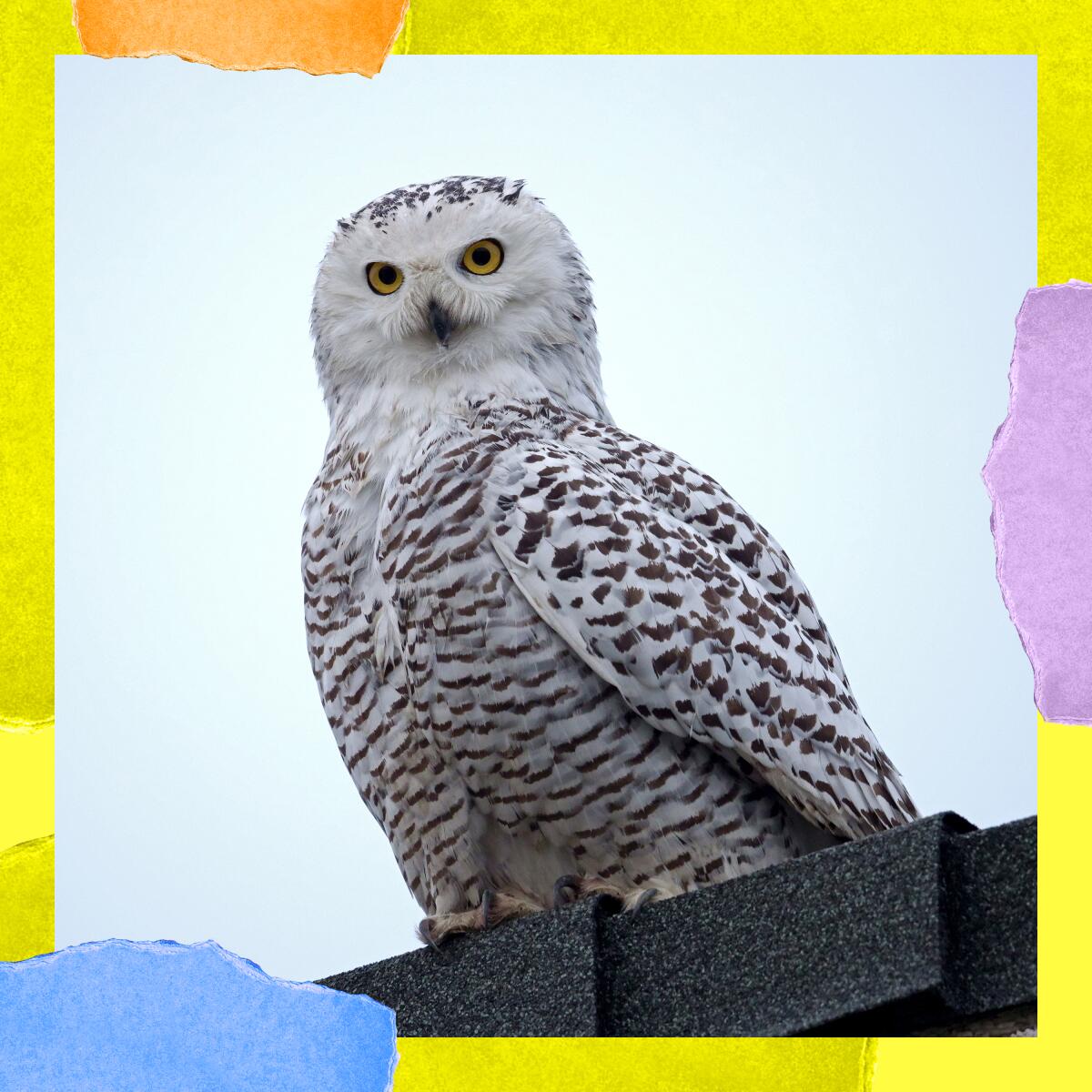
When I first moved into my pin-drop quiet San Gabriel Valley neighborhood, I found it excruciatingly quiet. I was used to traffic and street noise lulling me to sleep. Slowly, I started tuning in to the sounds around me: the famous local Amazon parrots roosting in our majestic oak tree, the squirrels chattering on our roof and the coyotes howling on our hill at night. It turns out that sound pollution is an increasing concern for all of us, creating health problems for humans including depression, anxiety, heart disease and cognitive impairment. Noise pollution drowns out birds, frogs and whales, which results in their increasing volume and may have consequences in mating and migration. Nighttime noise is louder in low-income communities of color too.
In 2022, California passed two new laws endeavoring to tamp down — or at least, monitor and report back on — some of that harmful noise. Under one, the California Highway Patrol will research and test noise-detecting cameras that could issue automatic tickets; in the other, illegally modified cars will require quiet fixes before their registration can be renewed. Sounds can be joyful, and I love the lively laughter of kids in my neighborhood. But if we’re drowning out all the natural sounds around us, we might miss hearing rare and wondrous creatures, like this snowy owl. Here’s hoping these laws kickstart a less polluted, healthier and more contemplative year.
For more insider tips on Southern California’s beaches, trails and parks, check out past editions of The Wild. And to view this newsletter in your browser, click here.
Sign up for The Wild
We’ll help you find the best places to hike, bike and run, as well as the perfect silent spots for meditation and yoga.
You may occasionally receive promotional content from the Los Angeles Times.




